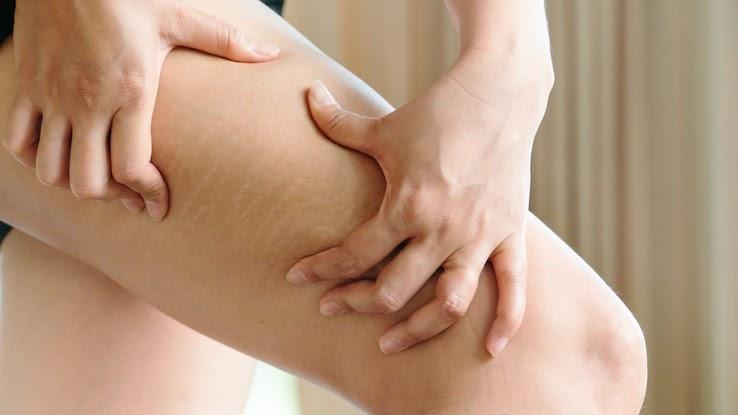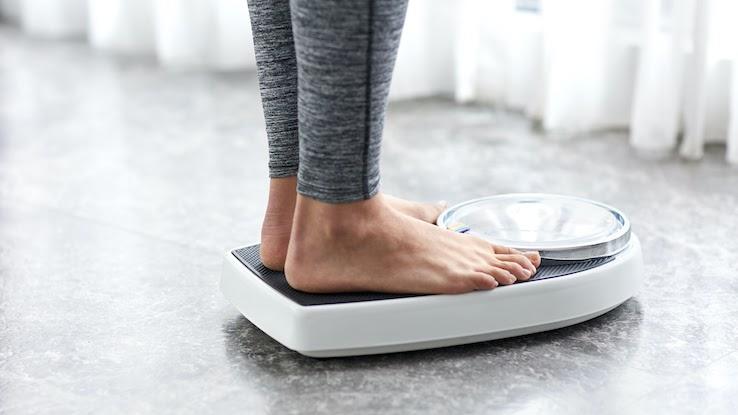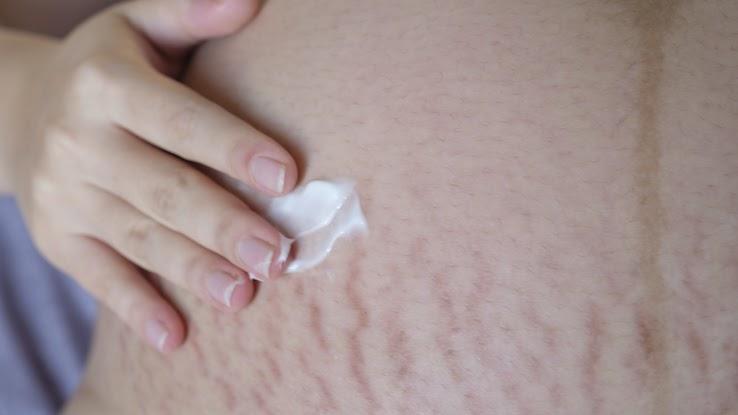
Stretch marks, also known as striae, are scars that appear on various parts of your skin, primarily around your stomach, thighs, hips, breasts, upper arms, lower back and calves. They usually start out looking red and purple, and then they later fade to a hypopigmented hue, or a color that’s slightly lighter than your skin tone. Stretch marks are often the product of stretching or tearing of the dermis, which is one of the layers of your skin. This can occur through a variety of very normal experiences — even adolescent growth spurts.
Stretch marks vary in appearance from person to person, particularly depending on how long a person has had them, where they’re located on the body and what type of skin they occurred in originally. The reasons they form can vary, too. Take a look at some of the most common causes of stretch marks.
Hormonal Changes & Pregnancy
There are several reasons why your hormones might fluctuate, including pregnancy and taking certain medications such as corticosteroids. Hormone fluctuations can lead to weight gain, which itself can cause stretch marks, particularly if you gain the weight quickly.

Pregnancy is also known to cause stretch marks in the abdominal region. As the uterus stretches and expands to accommodate a growing pregnancy, the collagen and elastin within the overlying skin can struggle to keep up, leading to stretch marks. Some pregnant people have noticed a reduction in the number of stretch marks developed through using moisturizing products such as cocoa butter or shea butter lotion.
Certain Medical Conditions
Certain medical conditions, such as Cushing’s disease and Marfan syndrome, tend to cause stretch marks either from weight gain or from a rapid increase in height. Cushing’s disease causes your body to overproduce a hormone called cortisol, leading to the primary symptom of weight gain, particularly in the face and abdomen. People with Cushing’s disease often develop stretch marks on their thighs or abdomens as a result of this weight gain.

Marfan syndrome is a connective tissue disorder that’s associated with a taller-than-average height for affected individuals. Often, people with Marfan syndrome experience large and rapid growth spurts, which can result in stretch marks on the back or thighs.
Rapid Weight Gain
One of the most common causes of stretch marks is rapid weight gain or obesity. Stretch marks tend to affect parts of the body that store adipose tissue (fat). The size and extent of stretch marks depend on the amount of weight gained and the length of the time frame when the weight is gained. Weight gain can happen as a result of a medical condition, pregnancy, certain medications or lifestyle habits.

Lifting Weights
It’s not uncommon for weightlifters, power athletes and individuals who lift weights for exercise to develop stretch marks. Even though weightlifting can help you gain muscle mass rather than fat, your skin cannot differentiate between fat and muscle. This means that any rapid increase in body mass can cause your skin to stretch. Weightlifters and power athletes tend to notice stretch marks in their upper shoulders and arms as a result of exercises that build muscle in those areas.

Having Breast Enlargement Surgery
Breast enlargement surgery itself doesn’t always lead to the formation of stretch marks. In some cases, however, the rapid stretching of the skin around the breast to accommodate an implant can cause hypopigmentation in the form of stretch marks.

Prevention of and Treatment for Stretch Marks
It’s not always possible to prevent stretch marks. However, there are certain measures you can take to help reduce your chances of developing them.

- Apply topical ointments rich in vitamin E in areas where you might expect stretch marks to form, such as around your belly before pregnancy.
- Keep yourself hydrated by drinking plenty of water.
- Eat fruits and vegetables to ensure your diet is full of nutrients that improve skin health.
- Use moisturizers to help with skin elasticity.
While it may not always be possible to prevent stretch marks, there are several steps you can take to treat the scarring after they have occurred. These methods may not completely remove your stretch marks, but they’ve been shown to reduce the appearance of hypopigmentation (color differences).
- Laser treatments: Laser treatments are typically performed by a trained dermatologist or skincare professional. They can help stimulate collagen and elastin formation in your skin and may reduce the overall intensity of your stretch marks.
- Sunscreen: The benefits of wearing sunscreen daily are numerous and include helping to prevent melanoma (skin cancer). However, regular sunscreen application can help reduce the chances that your existing stretch marks become more defined due to sun damage.
- Retinol cream: Retinol is a form of vitamin A that’s known to increase cell turnover and reduce scarring and signs of aging. There are several over-the-counter retinol products available. However, the most potent form is available by prescription only and is known as tretinoin. When applied properly, tretinoin can help increase your skin’s collagen stores and reduce the appearance of hypopigmentation and hyperpigmentation. You should not use tretinoin if you’re pregnant or nursing.
Resource Links:
https://www.mayoclinic.org/diseases-conditions/stretch-marks/symptoms-causes/syc-20351139
https://www.nchmd.org/education/mayo-health-library/details/CON-20155450





